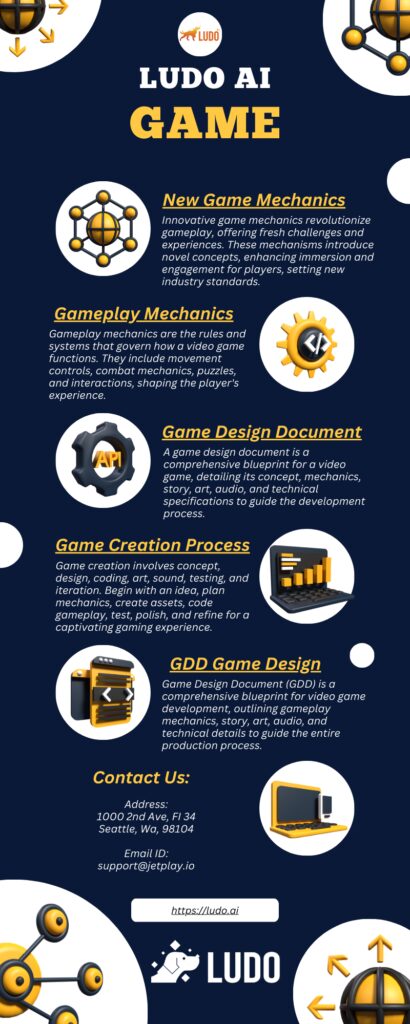Game development involves creating game mechanics, which are the rules and systems of gameplay. The process starts with conceptualization, where developers come up with the game’s theme, setting, and mechanics. Designers then detail the mechanics, create prototypes, and playtest them for balance and engagement. The next step is implementation, where the mechanics are programmed, assets created, and integrated into the game engine. Testing and iteration follow, where bugs and balance issues are identified and fixed. Finally, refinement and finalization ensure the mechanics are polished before release. This structured process aims to create enjoyable gameplay experiences for players.
From Concept to Creation: The Process of Developing Game Mechanics
Introduction
Game development is a complex and multi-faceted process that involves a wide range of skills and expertise. One of the key aspects of game development is the creation of game mechanics, which are the rules and systems that govern gameplay. In this article, we will explore the process of developing game mechanics, from the initial concept to the final creation.
Conceptualization
The first step in developing game mechanics is to come up with a concept for the game. This involves determining the overall theme, setting, and gameplay mechanics that will be central to the game. Developers will often brainstorm ideas, create concept art, and write design documents to help flesh out the initial concept.
Design
Once the concept has been established, the game mechanics must be designed in detail. This involves creating a framework for how the game will work, including the rules, objectives, and interactions that players will engage with. Designers will often create prototypes and conduct playtesting to refine the mechanics and ensure they are engaging and balanced.
Implementation
After the game mechanics have been designed, the next step is to implement them into the game. This involves programming the various systems and mechanics, creating assets, and integrating them into the game engine. Developers will often work closely with designers to ensure that the mechanics are implemented correctly and function as intended.
Testing and Iteration
Once the game mechanics have been implemented, they must be tested rigorously to identify any bugs, balance issues, or other problems. Testers will play the game, provide feedback, and developers will make adjustments as needed. This process may involve multiple iterations as developers fine-tune the mechanics to create an enjoyable gameplay experience.
Refinement
As the game nears completion, developers will focus on refining the game mechanics to ensure they are polished and engaging. This may involve tweaking parameters, adjusting difficulty levels, or adding new mechanics to enhance gameplay. Designers will often work closely with developers to make final adjustments and ensure the mechanics are well-balanced.
Finalization
Once the game mechanics have been refined and tested, the final step is to finalize them for release. This involves packaging the game, creating marketing materials, and preparing for distribution. Developers will often conduct one final round of testing to ensure the mechanics work as intended before releasing the game to the public.
Conclusion
Developing game mechanics is a complex process that requires creativity, technical skill, and attention to detail. By following a structured process from conceptualization to finalization, developers can create engaging and immersive gameplay experiences that captivate players and provide hours of enjoyment.
